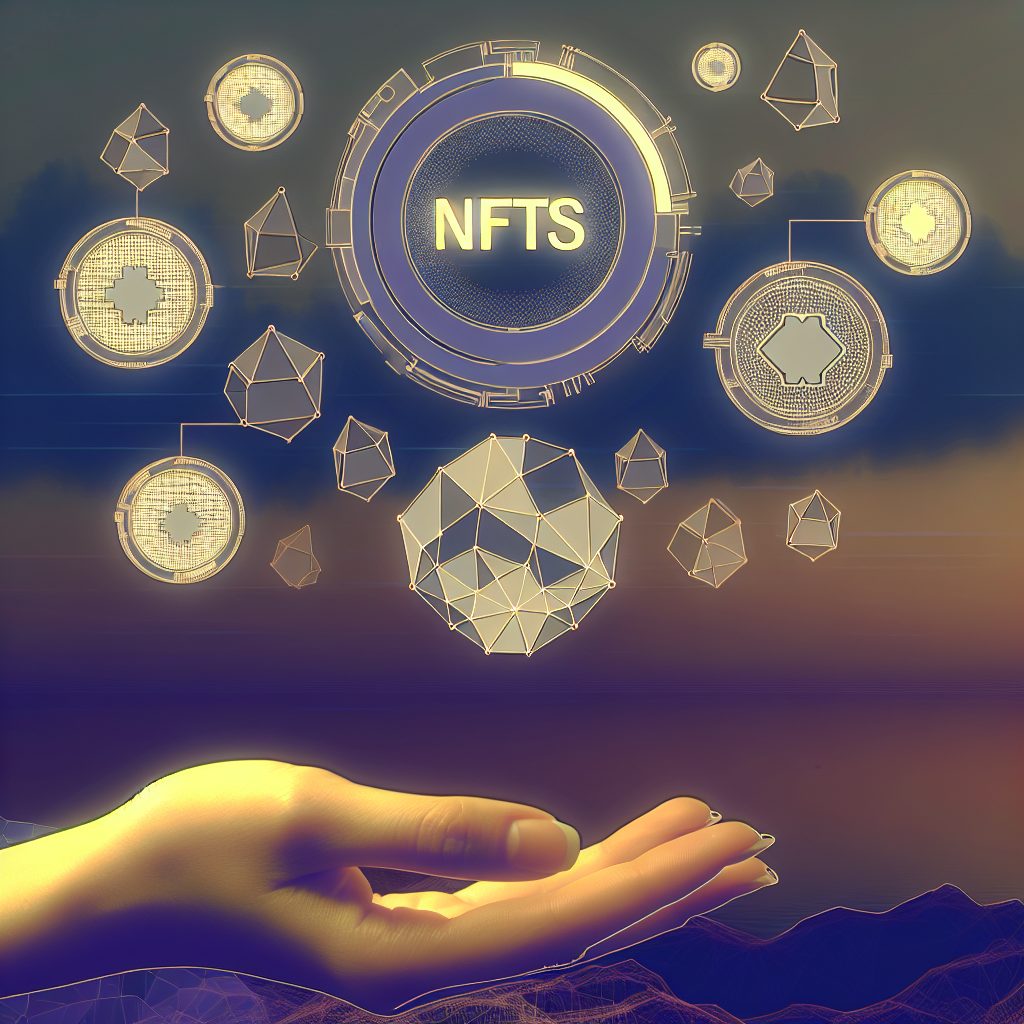Understanding Non-Fungibility in NFTs
The world of cryptocurrency has introduced a myriad of concepts, but few have captured the imagination quite like Non-Fungible Tokens (NFTs). At the heart of NFTs lies the concept of non-fungibility, a term that is crucial for understanding what makes these digital assets unique. This article delves into the intricacies of non-fungibility, its implications in the NFT space, and how it differentiates NFTs from traditional cryptocurrencies.
What Does Non-Fungibility Mean?
To grasp the concept of non-fungibility, it’s essential to first understand what fungibility means. Fungibility refers to the property of an asset whose individual units are interchangeable. For example, one US dollar bill can be exchanged for another dollar bill without any loss of value. In contrast, non-fungible assets are unique and cannot be exchanged on a one-to-one basis.
In the context of NFTs, non-fungibility means that each token is distinct and carries its own value, which is not interchangeable with any other token. This uniqueness is what makes NFTs particularly appealing for digital art, collectibles, and other forms of digital ownership.
The Characteristics of Non-Fungible Tokens
NFTs possess several key characteristics that stem from their non-fungible nature:
- Uniqueness: Each NFT has a unique identifier that distinguishes it from other tokens.
- Indivisibility: Unlike cryptocurrencies such as Bitcoin, which can be divided into smaller units, NFTs cannot be split. They exist as whole tokens.
- Ownership: NFTs are recorded on a blockchain, providing a transparent and immutable record of ownership.
- Interoperability: NFTs can be used across different platforms and applications, thanks to standardized protocols like ERC-721 and ERC-1155.
The Role of Blockchain in Non-Fungibility
Blockchain technology is the backbone of NFTs, enabling their non-fungible nature. Each NFT is created through a process called minting, where a digital asset is registered on a blockchain. This process involves creating a unique token that represents the asset, along with metadata that describes its properties.
Blockchains like Ethereum have become the most popular platforms for minting NFTs due to their robust smart contract capabilities. Smart contracts automate the execution of transactions and ensure that the terms of ownership are met without the need for intermediaries.

Applications of Non-Fungibility in the Cryptocurrency Industry
The non-fungibility of NFTs has led to a wide range of applications across various industries:
- Digital Art: Artists can tokenize their work, ensuring that each piece is unique and verifiable. Platforms like OpenSea and Rarible have made it easier for artists to sell their NFTs.
- Gaming: In-game assets can be tokenized, allowing players to own, trade, and sell their items. Games like Axie Infinity and Decentraland exemplify this trend.
- Collectibles: Digital collectibles, such as NBA Top Shot moments, leverage non-fungibility to create scarcity and value.
- Real Estate: Virtual real estate can be bought and sold as NFTs, providing a new way to invest in digital properties.
Real-World Use Cases of Non-Fungibility
Several notable projects and platforms have successfully harnessed the power of non-fungibility:
1. CryptoPunks
CryptoPunks are one of the earliest examples of NFTs, consisting of 10,000 unique 24×24 pixel art characters. Each punk has distinct attributes, making some rarer than others. The value of CryptoPunks has skyrocketed, with some selling for millions of dollars, showcasing the demand for unique digital assets.
2. Bored Ape Yacht Club (BAYC)
BAYC is a collection of 10,000 unique Bored Ape NFTs, each with its own traits and characteristics. Owning a Bored Ape grants membership to an exclusive community, further enhancing its value. The project has gained immense popularity, with some apes selling for over $1 million.
3. Decentraland
Decentraland is a virtual reality platform where users can buy, sell, and build on virtual land parcels represented as NFTs. Each parcel is unique, allowing users to create distinct experiences and monetize their virtual real estate.
The Economic Implications of Non-Fungibility
The non-fungibility of NFTs has significant economic implications. By creating unique digital assets, NFTs introduce a new form of scarcity in the digital world. This scarcity can drive up demand and value, leading to lucrative opportunities for creators and investors alike.
Moreover, the ability to tokenize assets opens up new revenue streams for artists, musicians, and content creators. By selling their work as NFTs, they can retain more control over their creations and earn royalties on secondary sales through smart contracts.
Challenges and Criticisms of Non-Fungibility
Despite the excitement surrounding NFTs, there are challenges and criticisms associated with their non-fungible nature:
- Environmental Concerns: The energy consumption of blockchain networks, particularly Ethereum, has raised concerns about the environmental impact of minting NFTs.
- Market Volatility: The NFT market can be highly speculative, with prices fluctuating dramatically based on trends and demand.
- Copyright Issues: The ease of minting NFTs has led to instances of copyright infringement, where artists’ works are tokenized without permission.
Future Trends in Non-Fungibility
The future of non-fungibility in the cryptocurrency industry looks promising, with several trends emerging:
- Integration with the Metaverse: As virtual worlds expand, NFTs will play a crucial role in representing ownership of digital assets within these environments.
- Fractional Ownership: New platforms are emerging that allow users to own fractions of high-value NFTs, making them more accessible to a broader audience.
- Enhanced Interoperability: As more blockchains adopt NFT standards, the ability to transfer and utilize NFTs across different platforms will improve.
FAQs About Non-Fungibility in NFTs
What is the difference between fungible and non-fungible tokens?
Fungible tokens are interchangeable and identical, like cryptocurrencies (e.g., Bitcoin). Non-fungible tokens are unique and cannot be exchanged on a one-to-one basis, representing distinct assets.
How are NFTs created?
NFTs are created through a process called minting, where a digital asset is registered on a blockchain, creating a unique token that represents that asset.
Can NFTs be sold or traded?
Yes, NFTs can be sold or traded on various marketplaces, allowing owners to transfer their unique digital assets to others.
What are some popular NFT marketplaces?
Some popular NFT marketplaces include OpenSea, Rarible, and Foundation, where users can buy, sell, and create NFTs.
Are NFTs a good investment?
Investing in NFTs can be risky due to market volatility. While some NFTs have appreciated significantly in value, others may not hold their worth. It’s essential to conduct thorough research before investing.
Conclusion
Non-fungibility is a defining characteristic of NFTs that sets them apart from traditional cryptocurrencies. By enabling unique digital ownership, NFTs have opened up new avenues for creativity, investment, and economic opportunities. As the cryptocurrency industry continues to evolve, understanding non-fungibility will be crucial for anyone looking to navigate this exciting landscape.
For the latest news and updates in the cryptocurrency world, consider visiting Bitrabo. You can also follow me on social media for more insights: X, Instagram, and Threads.
Disclaimer: This article is for informational purposes only and should not be considered financial advice. Always conduct your own research before making investment decisions.
The Crypto Watchlist of the Week 🔎
Subscribe to receive expert-curated projects with real potential—plus trends, risks, and insights that matter. Get handpicked crypto projects, deep analysis & market updates delivered to you.

